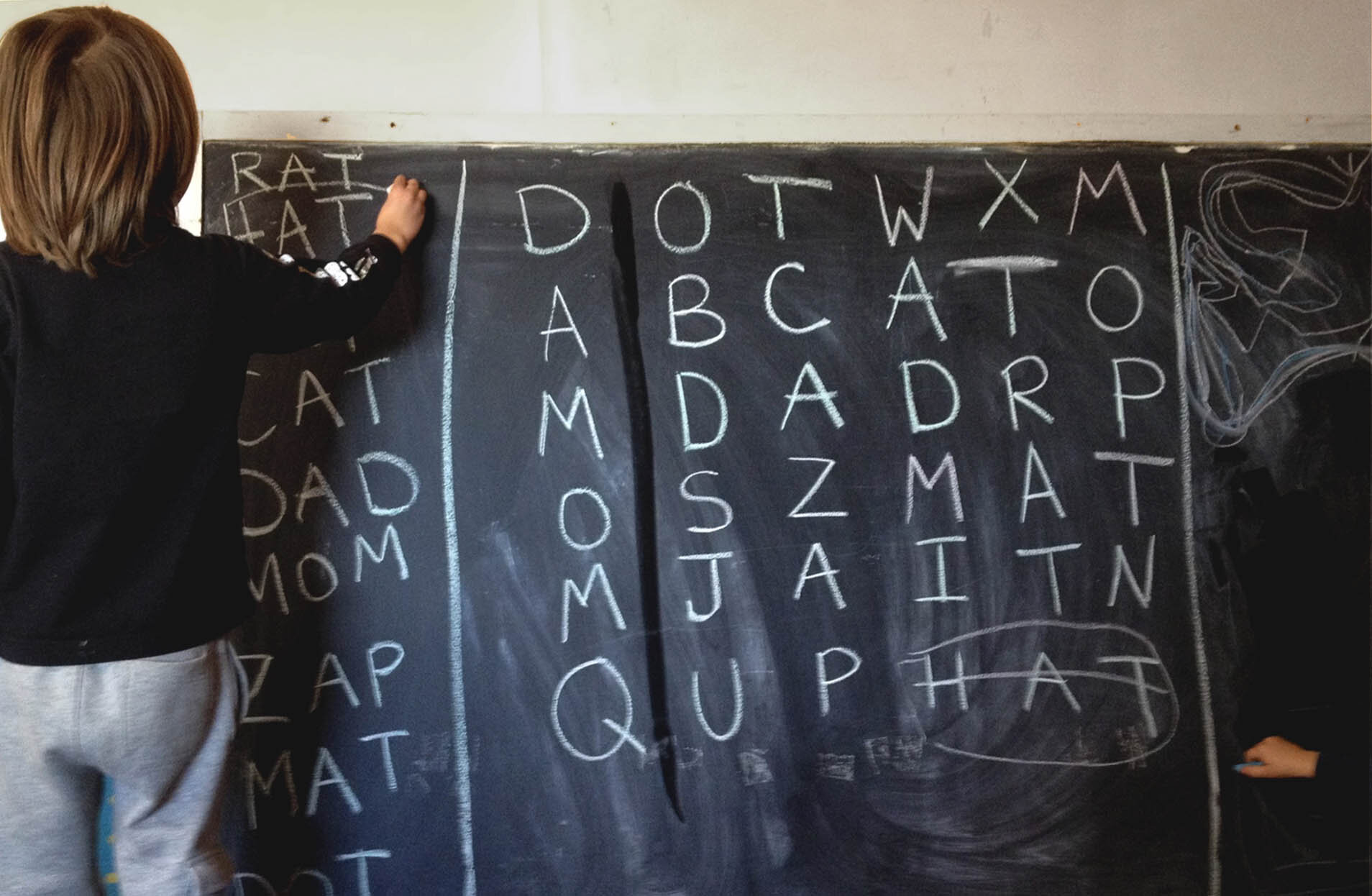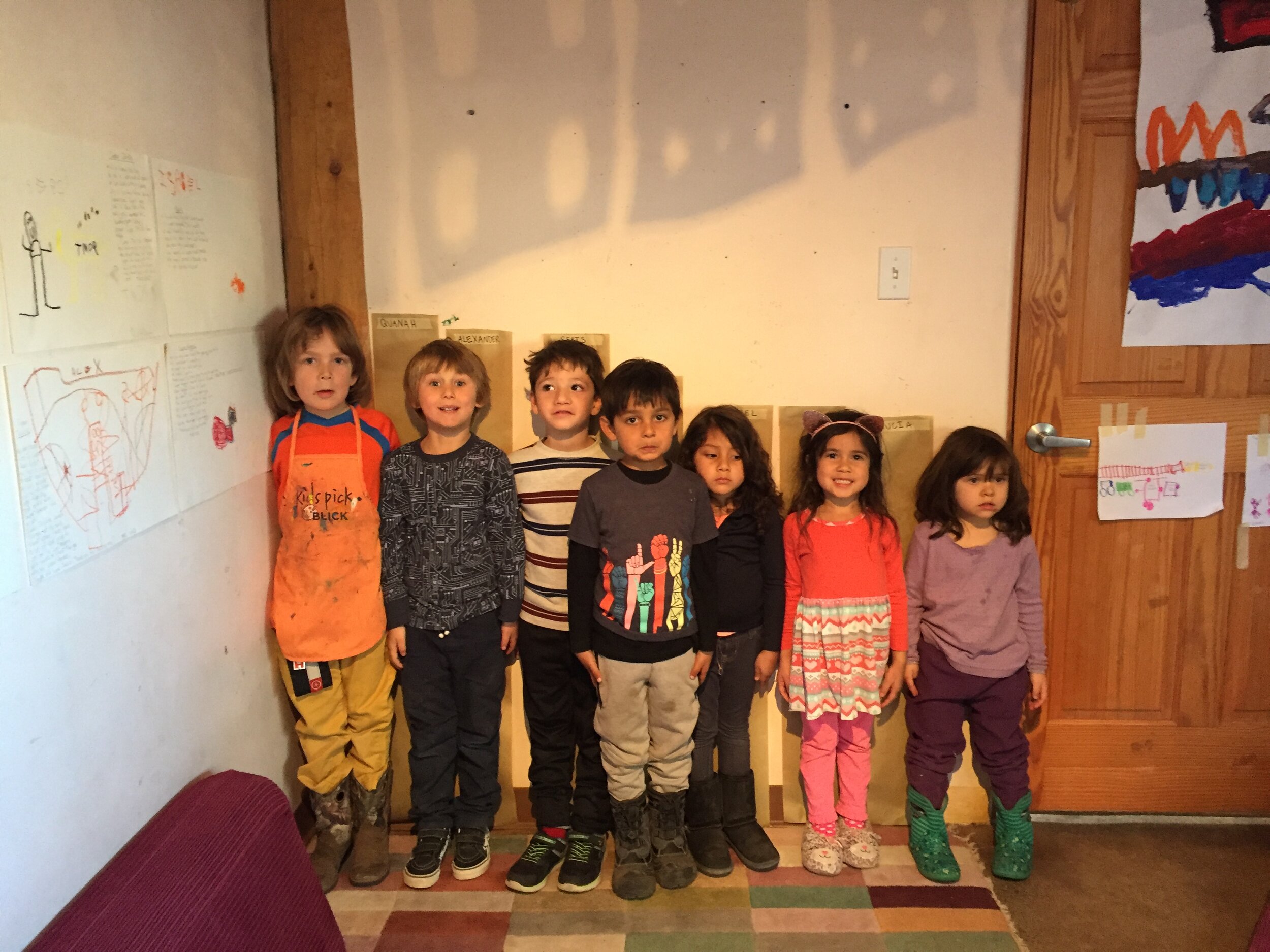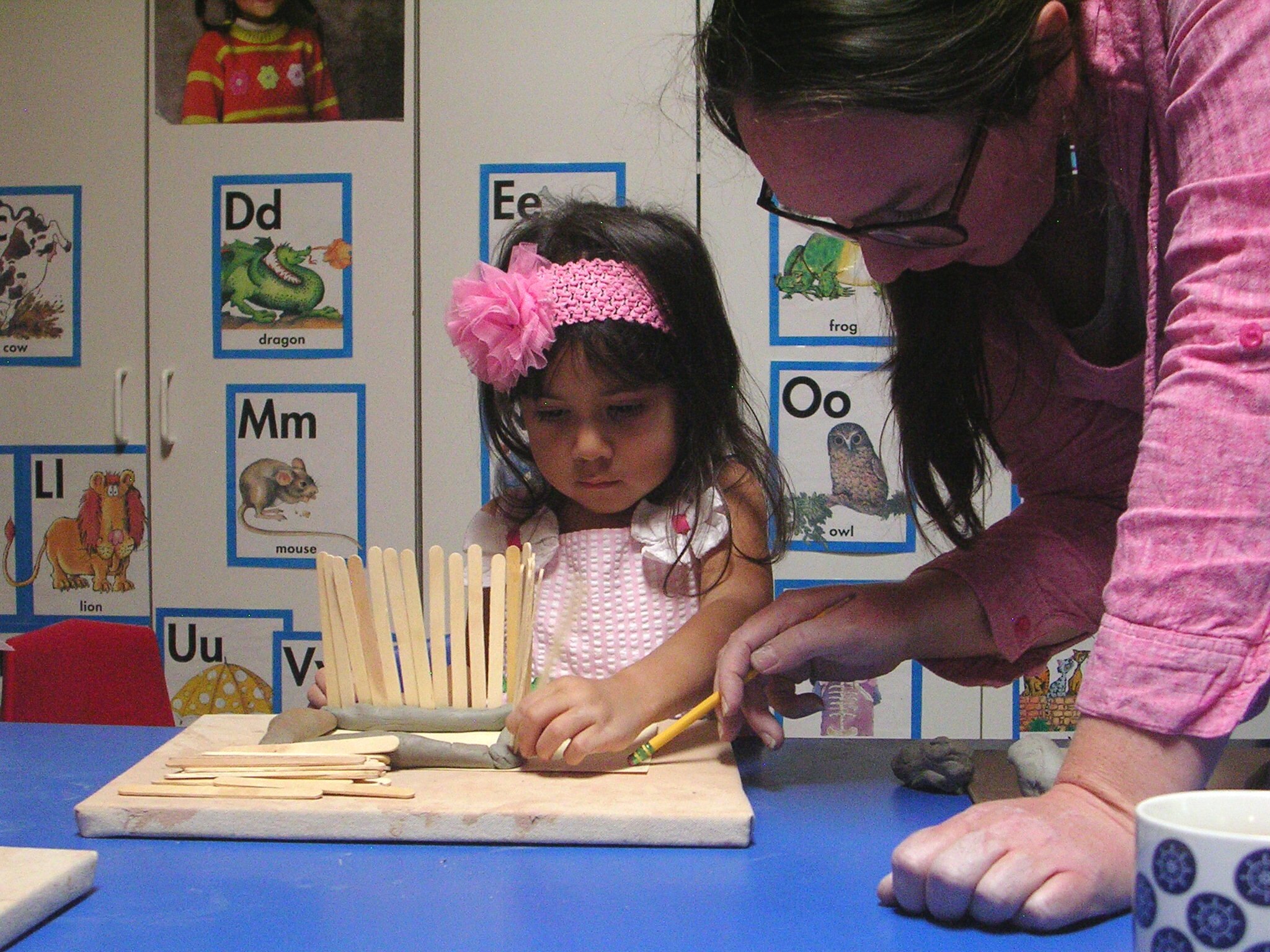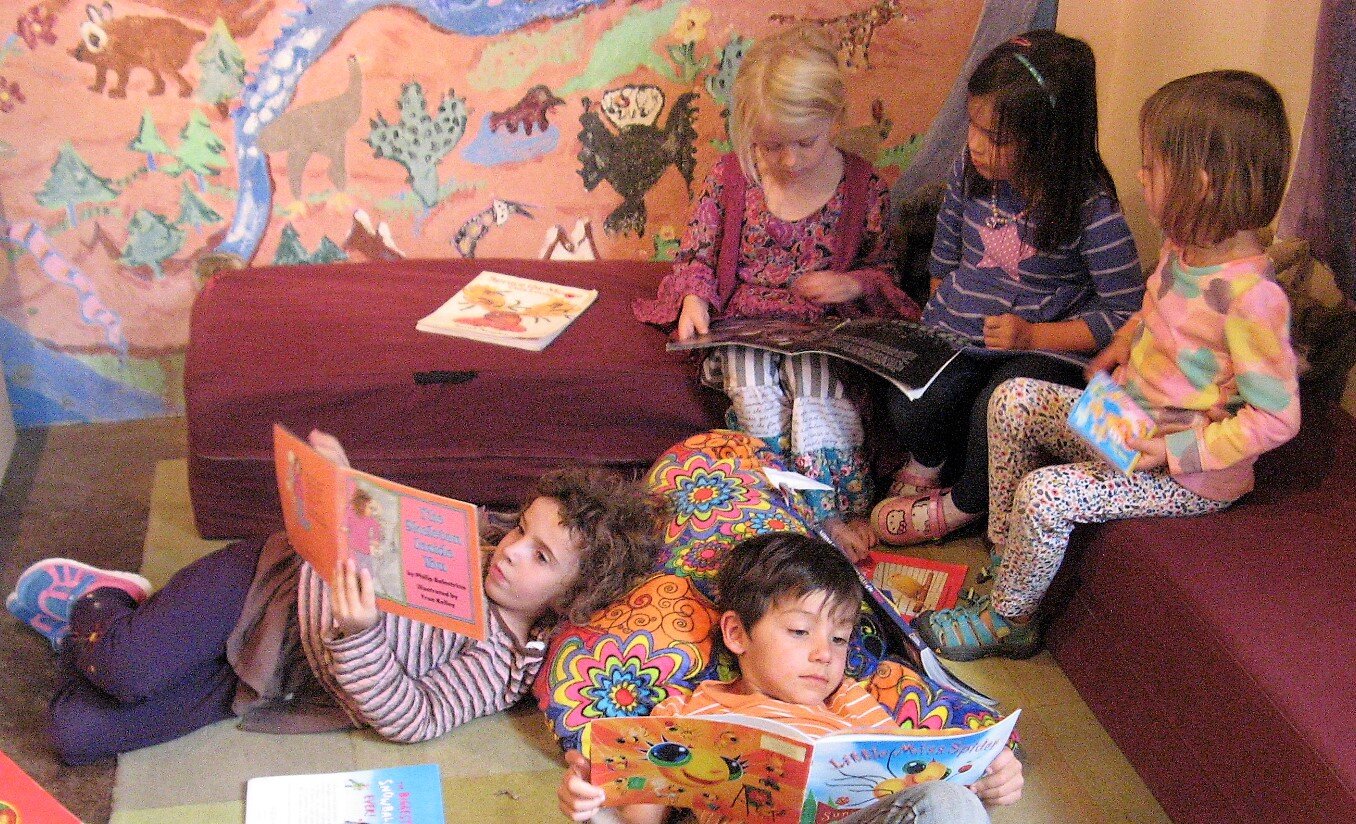Preschool – Kindergarten (3-6 years of age)
Little Earth preschool and kindergarten children learn through a play-based, experiential curriculum. This hands-on approach to learning is developmentally appropriate and is considered best practice by the National Association for the Education of Young Children. The integrated curriculum provides daily opportunities for the acquisition of language arts, literacy, mathematics and science skills, as well as opportunities for the expression of individual creative abilities in dance, music and art. Spanish is integrated into classroom activities. Teachers are especially attentive to the social/emotional needs of each child. Extensive individual interactions between teachers and children support and encourage each child as s/he explores and constructs meaning in his/her life and in the more expansive world of school.
Children in this class are 3-6 years of age. The daily classroom schedule allows time for children of all age groups to work on the same activity at the same time, recognizing, of course, that different children will approach the activity differently depending on their age and developmental level. There are also certain times during the day when children are divided into small groups which are selected based on the age and/or skill level of the children. In this way the kindergarten children are provided learning opportunities specific and appropriate to their stage of development and educational needs. As early childhood educators we recognize that although there may be an acknowledged sequence of child development and skills acquisition, each child progresses through that sequence at his/her own pace and in his/her own way. Different children learn differently. Moreover, chronological age is only one in a constellation of criteria necessary to determine the developmental level and learning needs of a particular child. A low student/teacher ratio and astute observation and assessment by teachers combined with a working knowledge of child development allow for the implementation of a flexible and individualized curriculum, which can truly serve each child.
The Preschool/Kindergarten Class curriculum engages children primarily in hands-on learning because we understand that these activities, whether it be block building, painting, working with clay, digging in the sandbox, water play in the water table, arranging math manipulatives or swinging on a swing, are the most useful learning tools for children of this age. Educators recognize that “This is an age when much learning is transmitted through the large muscles, when learning goes from the hand to the head, not the other way around.” (C. Wood, Yardsticks, 2007) The curriculum is integrated, developmentally appropriate and attends to, and educates, the whole child. Teachers foster children’s social/emotional, cognitive and physical (gross and fine motor) development, with the understanding that these areas of learning are wholly interconnected and relational. In all they do, young children are consistently and eagerly engaged in trying to make meaning of their world. Teachers enhance children’s opportunities for new experiences and discoveries by building upon children’s innate curiosity and enthusiasm for knowledge and by encouraging children to examine the process of finding an answer rather than focusing on the answer itself. It is primarily through their play that children investigate their world, try things out and attach mental representations to the physical and social situations, which they create and with which they interact. Play provides for children a meaningful context in which to learn skills and develop concepts necessary for more abstract and symbolic thinking required for more complex future learning. Children are more likely to retain skills and information learned in a context, which is meaningful to them, to which they are emotionally connected and in which they are interested. Play provides that context, whether it is dramatic or constructive, cooperative or solitary, structured or self-directed. All of these play possibilities are provided daily to the children in the classroom.
Language arts and literacy are integrated throughout the curriculum. A great variety of books and writing materials abound in every part of the classroom. Teachers read to children every day, individually and in groups, and take the time for questions and discussion in order to develop children’s comprehension skills. Storytelling in the oral tradition is also an important component of the language arts curriculum. Extended conversations between teachers and children are common, and are encouraged among the children. The kindergarten age children have a dedicated time each day (DEAR—“drop everything and read”) during which they each “read” a book or read/listen to a book on tape. The Bunny language arts curriculum is designed to build children’s oral communication skills, including their vocabulary; teach children how to listen; make children aware of the relationship between speech and writing, sounds and letters; and foster their use and understanding of symbols, be it drawing or writing. Teachers appropriately support and encourage each child’s interest in reading and writing as that interest emerges.
Mathematics is also integrated throughout the curriculum. Teachers consistently make children aware of real-life situations occurring in the classroom or on the playground, which require mathematical problem solving. Children have access to various math manipulatives (e.g., blocks, geo-boards, Cuisenaire rods, pattern blocks, uni-fix cubes). Through the use of these manipulatives the children experience mathematical concepts and relationships concretely. These concrete experiences are the necessary foundation for later paper and pencil, abstract computation. The mathematics curriculum teaches children to identify shapes and describe spatial relationships; to measure (generally unconventional forms); to make comparisons; to estimate; to make and recognize patterns and sets; to count; to understand one-to-one correspondence and whole numbers; to make and read simple graphs. Teachers appropriately support and encourage each child’s understanding of these mathematical concepts and operations as that understanding emerges.









